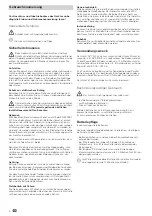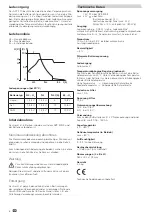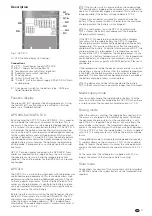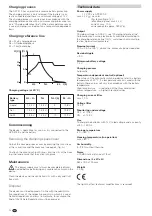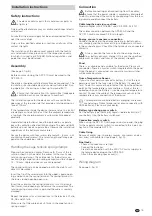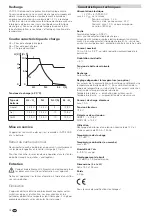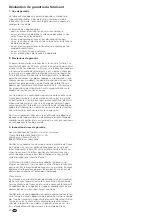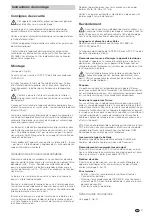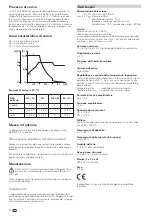
10
Operating instructions
Please be sure to read the instructions for installation
and use before attempting to connect and use this device!
Symbols used
Symbol indicates a possible hazard.
Comment including information and tips.
Safety instructions
To protect you from electrical shocks, injury or burns
the following basic safety principles must be observed
when using electrical devices. Please read and follow these
instructions before using the device.
Installation
Ensure that the devices are positioned safely and cannot fall
down or over. Always position the cables to ensure they do
not pose a tripping hazard. Do not expose electrical devices to
rain. Do not operate electrical devices in damp or wet environ-
ments. Do not operate electrical devices close to flammable
liquids or gases.
Protection against an electrical shock
Only operate devices whose casings and cables are undam-
aged. Ensure the cables are installed safely. Do not pull on
the cables.
Only operate the device if it has been secured with
a 30 mA fault-current circuit breaker.
The valid local
installation regulations must be observed.
Use
During use, please observe the regulations of EN 60335-1: 2010,
according to which this device has not been designed for use
by people (including children) who have restricted physical,
sensory or mental abilities or a lack of experience and / or
knowledge, unless they are supervised by a person respon-
sible for their safety or have received instructions from that
person as to how the device is to be used.
Children should be supervised to ensure they do not play with
the device.
Do not use electrical devices for purposes other than those
stated by the manufacturer. The ventilation slits in the housing
must be free and may not be covered by luggage, towels or
clothing etc.
Attention:
Batteries can generate explosive gases during charging and
operation. Keep away from flames and ignition sources.
Ensure that the battery compartment is sufficiently ventilated.
Before connecting or disconnecting cables, ensure that the
power supply has been interrupted! To do this, remove the
mains plug or the coupling plug to the towing vehicle and
disconnect the battery.
Mains supply mode on ferries
The main supply voltage on ferries can be prone to heavy
fluctuations. Therefore, do not connect this device with this
voltage without adequate protection.
Generator mode
Please observe the handling instructions in the manufac-
turer‘s operating instructions. The generator must satisfy the
230 V mains power connection values. The generator must
comply with the 230 V mains connection values. Only operate
the device on a generator that runs steady. The voltage peaks
that occur during the start-up and shut-down phase (e.g. due
to a lack of fuel) can damage the device.
Repairs
Do not repair or modify the device. Please contact your dealer
or the Truma Service (see service manual or www.truma.com).
Accessories
Only use accessories and additional devices that are supplied
or recommended by the manufacturer.
Application purpose
The APC 310 device can be operated together with the Truma
power supply (e.g. APS 400-K) as an automatic charger. It only
serves to charge 12 V lead accumulators comprising 6 single
cells (e.g. car battery) with a capacity of 50 Ah – 150 Ah.
It can be used universally and for permanent mode and paral-
lel mode. This automatic charger has been designed to work
best with gel, AGM or liquid electrolyte batteries.
The device is designed for installation into caravans.
Improper use
The device is not suitable for charging
– 6 V batteries or 6 V lead accumulators,
– non-chargeable batteries,
– nickel-cadmium batteries.
If batteries with a rated voltage of 6 V are charged with the
device, gassing occurs immediately. An explosive gas can
be created.
Battery care
(also maintenance-free batteries)
The following points should be observed to extend the
battery life:
– Batteries should be fully charged before and after they have
been used,
– disconnect from the power circuit in the case of longer
standstills (e.g. with a circuit-breaker or by disconnecting
the battery terminal),
– in the case of longer standstill periods, the battery must be
disconnected and charged for 24 hours at the latest every
12 weeks.
Store fully charged batteries in a cool but frost-free place
during the winter and recharge regularly (every 12 weeks).




